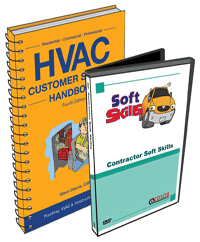Ohio schools, union contractors working together to help high school students build a path to the skilled trades.
In two of Ohio’s major cities, high school students are introduced to apprenticeship programs as early as sophomore year, creating a symbiotic relationship between local schools and the skilled trades and successful recruitment tool for decades.
The program, known as the School to Work Program in Columbus and the School to Apprenticeship Program in Dayton, is a Sheet Metal Workers Local 24 initiative with one goal: to educate welding and sheet metal students at career and technical centers on the career benefits of the sheet metal union.

During sophomore year, training coordinators visit classes to present the facts on union apprenticeship. In Dayton, students are paid apprentice wages during this time with pre-apprentice benefits, and they begin attending night courses with the goal of simultaneously finishing their senior year of high school and their first year of apprenticeship. In Columbus, students are designated and paid as pre-apprentices.
Once the senior year begin, there are various ways students can work and attend school. Some career and technical centers allow students to alternate between a week of school and a 40-hour week. Others require students to attend school in the morning and work in the afternoons.
The Dayton apprenticeship brings in 85 to 90 percent of all students they contact into the apprenticeship.
Josh Moorehouse, 22, graduated from the Dayton apprenticeship in August 2019. While attending the Miami Valley Career and Technology Center during high school, he met Local 24 training coordinator Eugene Frazier and caught the sheet metal bug. Upon being accepted into the apprenticeship, he entered right after graduation.
His career center allowed Moorehouse to attend school for two weeks and then work full-time for two weeks for Reick Services, where he’s worked since he started the apprenticeship.

“A lot of kids in the younger generation are worried about what they can get now, money-wise. I would stress how much they could have when they retire,” he says. “They have a larger arrangement of options. They can go wherever they want and know the pay will be similar.”
The other carrot at the end of the stick – zero college debt. Other training programs Moorehouse researched would have left him around $20,000 in debt.
“I show up and I go to work, and I don’t have to pay one cent of it,” he explains. “It’s a no-brainer — you go to work to pay for your schooling.”
Currently, Moorehouse works in the shop, but on any given day, he could be working in the AutoCAD department as well. Every day is different, and every day he learns from his fellow sheet metal workers and contractors.
It’s a mutually beneficial relationship as professional contractors have just as much to grain from molding the next generation of workers, Frazier explains.
“It takes a full commitment on behalf of everyone, so it took a while to get it to where it is now,” he says. “The relationship has to start very early, and it’s a lot of work, but it’s worth the dividends.”
Apprentices receive college-accredited training during the apprentice programs in AutoCAD, air balancing, refrigeration/service, welding and heating, ventilation and air conditioning (HVAC) design, fabrication and installation. While they are learning in the classroom, they are gaining skills on the job site including installation of architectural sheet metal, kitchen equipment and duct for heating and air conditioning systems in residential and commercial buildings.
The goal is for apprentices to graduate with a college degree, zero college debt and a career to last a lifetime. More than 14,000 apprentices participate in 148 training centers across the United States and Canada, learning curriculum and using the free training materials provided by the International Training Institute (ITI), the education arm of the unionized sheet metal, air conditioning and welding industry. or call 703-739-7200.
Congratulations

Adam Smith, a former instructor at Sheet Metal Workers Local 85’s training center in Atlanta, has joined the International Training Institute (ITI) field staff as the new Western Regional welding assessor and field representative.
Smith, a third-generation union member and second-generation sheet metal worker, has spent the bulk of his career working at McKenney’s Inc., a large mechanical contractor located in the Atlanta area, where he began as an apprentice in 2000. Most recently, Smith served as general superintendent for the company.
“Adam has proven himself to be a dedicated employee and student of the trade,” said James Page, ITI administrator. “He has pursued and received certifications in nearly every possible specialty over the years, and through his role as an instructor has generously given back to other members coming up in the trade. We are very lucky to have him join our staff and look forward to seeing him continue to grow as a SMART member, instructor and mentor.”
Throughout his career, Smith has been active in his local, serving as vice president, trustee and as an instructor at the training center. In 2012, he began working with the ITI in its instructor training program.
Smith says he is excited about his new role at the ITI, which will include helping out with the SMART Heroes program.
“I strongly believe that the SMART Heroes program offers our transitioning veterans an opportunity to enter into a satisfying, lifelong career in the unionized sheet metal industry, and I look forward to contributing to their success in any way I can,” Smith said.
In addition to his role working with the SMART Heroes program, Smith will be assisting training centers with their welding programs, acting as a welding assessor, helping assist in curriculum development at ITI and continuing to act as an instructor-trainer.
This story originally appeared in the February 2020 issue of SNIPS magazine.










